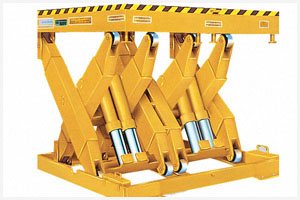
The use of compressed air to create forces coincided with the early Christ. Primitive man has been instrumental in the use of pneumatics in daily life by using tools such as air bellows. But the first serious pneumatic applications in the industrial sense, 19. century began with the use of compressed air in hand tools and pneumatic to date, has taken place in many different working areas.
In particular, thanks to the widespread use of electropneumatic systems, pneumatic, mass production applications and automated production has become one of the systems needed or even preferred.
The use of hydraulics in the history of mankind, like pneumatics, came across before Christ. Due to the incompressibility of liquids in hydraulic, high working pressures are easily achieved, and in parallel, large forces required for heavy duty are obtained. Unlike pneumatics; the hydraulic is ideal for applications where large forces are required, but precise positioning is required. Thus, the speed and forces specified for the system can be adjusted steplessly and precisely.
Hydraulic systems can be preferred in areas where large forces are required and power is prioritized, while pneumatic systems are preferred in areas where small forces are sufficient, but fast work is important.
Since the basic principle of both systems is to use the power of compressed air, they are potentially dangerous in adverse situations. Leakage of the compressed liquid or air means the discharge of the load in an instant. This is a great danger for the maintenance of workers and the loads they carry. Based on this fact, the Ministry of Labor and Social Security has issued the Regulation on Health and Safety Conditions in the Use of Work Equipment.
As with other equipment in the lifting and transmission equipment group, periodic checks and inspections of hydraulic and pneumatic lifting platforms are required at least once a year. In addition, these controls and inspections must be carried out by authorized persons. Controls and reports issued by mechanical engineers, mechanical technicians or high technicians as described in the Regulation shall not be deemed valid.
Before the controls to be carried out, reports of the previously conducted controls are requested and if there are any nonconformities detected, it is checked whether they have been removed or not. The static and dynamic controls of the hydraulic and pneumatic lifting platforms, the loaded and unloaded performance controls and a series of inspection and control operations are then carried out.